From Monthly Film Bulletin, December 1975 (Vol. 42, No. 503). — J.R.

Framed
U.S.A., 1974
Director: Phil Karlson
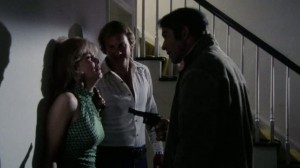
In films as diverse as 99 River Street and The Phenix City Story, Phil Karlson has shown a striking aptitude for the dynamics of seedy crime melodramas — particularly those which deal, in Andrew Sarris’s phrase, “with the phenomenon of violence in a world controlled by organized evil”. Working, however, in slicker settings and with a plotline at once as hackneyed and as confused as the one in Framed, he appears no better than anyone else at handling the hysterical revenge theme that has often seemed his stock-in-trade.
Discounting some lamentable lab work and five minutes of censor’s cuts in the version under review — which apparently include a rape and some protracted pre-murder mayhem perpetrated by the hero against a failed kidnapper (shooting one ear off and prodding the other with hot wire, until he gives out information) — it is difficult to imagine what could have been salvaged from such a nonsensical collection of plastic characters and cardboard stances, where the narrative proceeds as if by hiccups and the film’s dramatic highlight is provided by the hero remarking of a minor villain, “First time I ever saw a tub of shit in a suit”. Read more
From Monthly Film Bulletin, February 1976 (Vol. 43, No. 505). It’s worth noting that (1) this stinker made a fortune, which suggests that many people must have liked it, and (2) cinemas were required to book it for extended runs regardless of whether or not people showed up or liked it, making it the only movie showing for a lengthy time in many small towns that summer and thus making its profitability a bit of a self-fulfilling prophecy. — J.R.
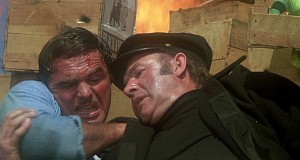
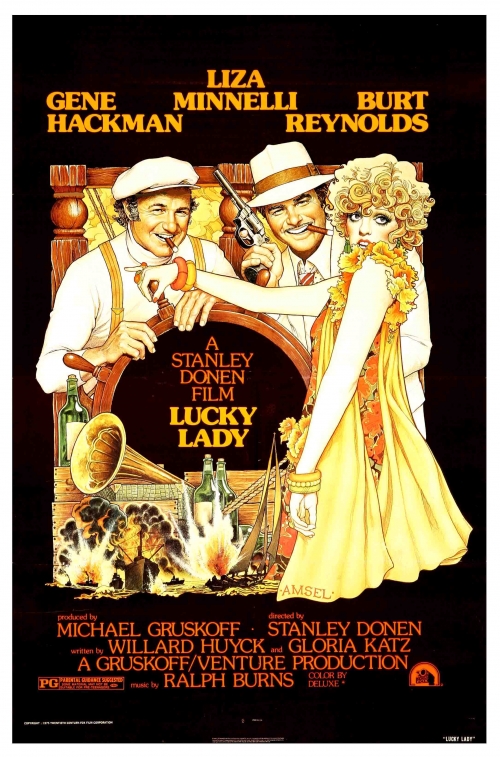
With an outsized budget estimated variously at $12,600,000 (Variety) and £10,000,000 (Daily Mirror), three box-office favourites and a script deliberately written, according to co-author Gloria Katz, as “the most commercial thing we could think up”, Lucky Lady is both conspicuously overproduced and undernourished.
The presence of Stanley Donen seems to count for little in a project that might more logically have been entrusted to a computer. All it has to express, quite simply, are its deliberations: to combine as many saleable features as can be packed on a screen within the space of two hours. A little of everything is thus tossed into the mixture; and a great deal of nothing emerges out of the isolation and autonomy of the assorted elements. Read more
From Film Comment (July-August 1999). I’ve done a light edit, trimming part of my original conclusion. It’s worth adding that at least two additional pieces about this film have recently turned up on the Internet — a new essay by Ignatiy Vishnevetsky (the first part of an ongoing series) and a detailed account by the late Gilbert Adair that was originally published in 1987, not long after Affaires Publiques was rediscovered in Paris.
I apologize for the poor quality of most of the illustrations from Bresson’s short film, which are the best that I could find. — J.R.

Ten years ago, I flew all the way from Chicago to the San Francisco Film Festival for a weekend to see Robert Bresson’s first film, which had been discovered in incomplete form at the Cinémathèque Française, bearing the title Béby Inauguré. Shorn of three of its musical numbers and now totaling 23 minutes, this rather elaborate piece of slapstick and surrealist tomfoolery was written and directed by Bresson and released in 1934, a full nine years before shooting started on his first feature, Les Anges du péché, and I had been hearing about it for years as an irretrievably lost curiosity. Read more
From the Chicago Reader (May 28, 2004). — J.R.
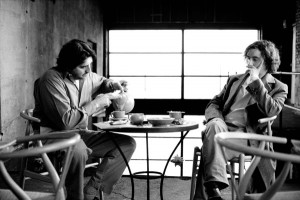
Like Mystery Train and Night on Earth, this feature by Jim Jarmusch is a collection of short stories, but it’s funnier and more formally adventurous than either; it’s also ultimately greater than the sum of its parts. Shot in black and white over 17 years, its 11 episodes feature actors and/or musicians, usually playing themselves and hanging out together in cafes while consuming caffeine and nicotine. One recurring theme is the ethics and protocol of being a celebrity (explored most impressively by Alfred Molina and Steve Coogan, and by Cate Blanchett in a virtuoso double role as herself and her own cousin); another is the everyday tension that can develop between friends and relatives. Among the two dozen stars are Isaach de Bankole, Roberto Benigni, Steve Buscemi, GZA, RZA, Bill Murray, Iggy Pop, Bill Rice, Taylor Mead, Tom Waits, and the White Stripes. R, 96 min. Music Box.
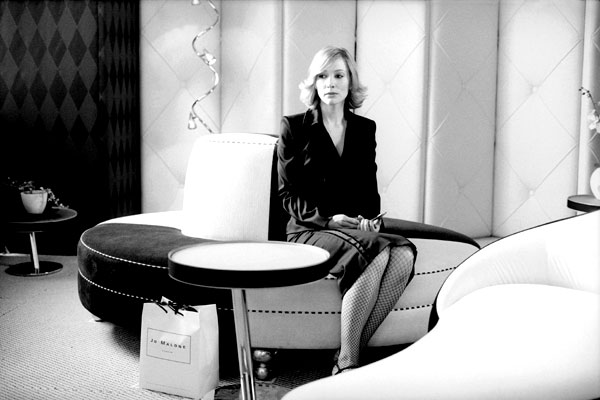 Read more
Read more
From the Chicago Reader (July 6, 2001). — J.R.

A collaboration between the living Steven Spielberg and the late Stanley Kubrick seems entirely appropriate to a project that reflects profoundly on the differences between life and nonlife, not to mention the human and the nonhuman. It’s easy to say that Kubrick thought about questions that Spielberg only knows how to approach emotionally, but that surely oversimplifies the range of both filmmakers. A more accurate way of putting it would be to say that Kubrick started this picture and came up with the idea that Spielberg should direct it, and after inheriting a 90-page treatment Kubrick had prepared with Ian Watson and 600 drawings he’d done with Chris Baker, Spielberg finished it in so much his own manner that it may be his most personal film, as well as his most thoughtful. It nonetheless delivers more of a posthumous statement from Kubrick than I would have believed possible, a sequel to 2001: A Space Odyssey and even Eyes Wide Shut (with an equally offbeat view of New York) as well as Close Encounters of the Third Kind and E.T. the Extra-Terrestrial. A film that might make you cry, it’s just as likely to give you the creeps afterward, which is as it should be. Read more
From the Chicago Reader (December 1, 1987). — J.R.
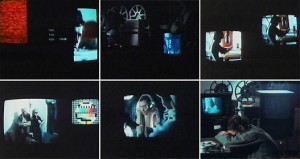
Often juxtaposing or superimposing two or more video images within the same ‘Scope frame, Jean-Luc Godard’s remarkable (if seldom screened) 1975 feature — one of the most ambitious and innovative films in his career — literally deconstructs family, sexuality, work, and alienation before our very eyes. Our ears are given a workout as well; the punning commentary and dialogue, whose overlapping meanings can only be approximated in the subtitles, form part of one of his densest sound tracks. Significantly, the film never moves beyond the vantage point of one family’s apartment, and the only time the whole three-generation group (played by nonprofessionals) are brought together in one shot is when they’re watching an unseen television set. In many respects, this is a film about reverse angles and all that they imply; it forms one of Godard’s richest and most disturbing meditations on social reality. The only full ‘Scope images come in the prologue and epilogue, when Godard himself is seen at his video and audio controls. In French with subtitles. 88 min. (JR)
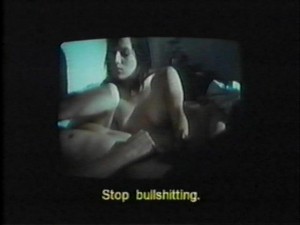 Read more
Read more
From the Chicago Reader (June 30, 2006). — J.R.

This superb 1950 tragedy about a former gunfighter (Gregory Peck in a handlebar mustache) trying to shake off his violent past and its attendant celebrity doesn’t have the sort of reputation among auteurist critics that it deserves, largely because it was directed by the out-of-fashion Henry King. But it’s one of the earliest and best antiwesterns, made before the subgenre became self-conscious about critiquing the standard myths. Some that followed are merely contrary; this has the ring of truth. William Bowers and William Sellers collaborated on the script; with Helen Westcott, Millard Mitchell, Jean Parker, Karl Malden, and Skip Homeier. 85 min. Also on the program: Daffy Doodles (1946), a Daffy Duck and Porky Pig cartoon by Robert McKimson. Sat 7/1, 8 PM, LaSalle Bank Cinema.
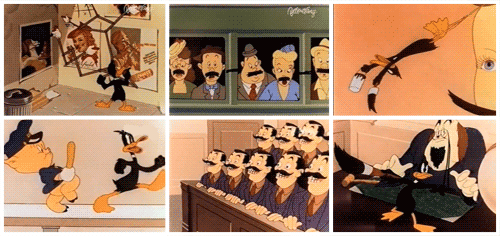 Read more
Read more
A program note written for the London Film Festival in 1976, held at the National Film Theatre in November. On November 17, at the first of two screenings, Duelle appeared as a double bill with the world premiere of Noroît, which was shown immediately afterwards, with Rivette in attendance. –- J.R.
Twhylight (Duelle)
FRANCE 1975

Labelled the second feature in [Jacques] Rivette’s four-part Scènes de la Vie Parallèle, Duelle is in fact the first to be completed. Like all the films in the projected series, it covers the ‘Carnival’ period between the last new moon of winter and the first full moon of spring: the only time when goddesses can appear on earth and have commerce with mortals. These goddesses are split between moon ghosts and sun fairies; in Duelle, we find a ghost (Juliet Berto) and a fairy (Bulle Ogier) competing for possession of a diamond known as the Fairy Godmother which can keep them on earth past their allotted forty days.With a non-existent word (the female form of a masculine noun) as title and an imaginary muth as starting-point, Duelle deliberately defines itself through contradictions and clashes, maintaining a perpetual disequilibrium of elements that equally flirts with and refuses the comforting balances of ‘classic’ narrative. Read more
From the Chicago Reader (November 2, 2001). — J.R.

K-Pax
**
Directed by Iain Softley
Written by Charles Leavitt
With Kevin Spacey, Jeff Bridges, Mary McCormack, Alfre Woodard, David Patrick Kelly, Peter Gerety, Saul Williams, and Celia Weston.
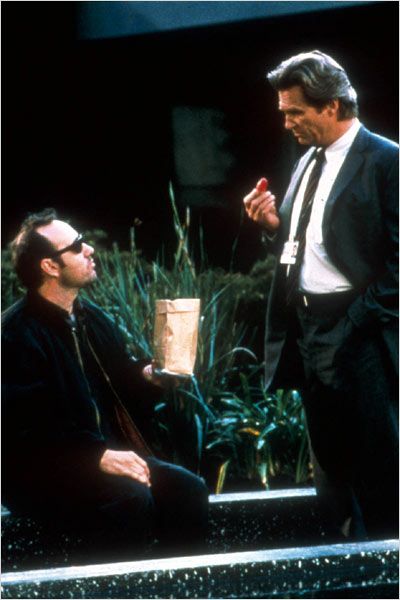
The last chapter of Robert Lindner’s best-seller The Fifty-Minute Hour, which I read when I was a teenager, was the first thing I was reminded of while watching K-Pax, a movie about a New York shrink at a psychiatric hospital (Jeff Bridges) treating a brilliant man (Kevin Spacey) who calls himself Prot and claims to come from a planet called K-Pax. In each story a psychiatrist finds himself seduced into half believing the SF projections of one of his patients, and part of the allure of that setup — like the case studies in an Oliver Sacks collection — is that we’re invited to flirt with the poetic notions behind some of its suppositions.
Based on a novel by Gene Brewer and written by Charles Leavitt, I can’t discount the undeniable pleasure of watching Spacey and Bridges act up a storm, but a lot of what makes this movie watchable and compelling is precisely what’s bogus about it: it gives in to a desire to generalize about people who are mentally ill — a group that doesn’t necessarily include Prot — and to feel satisfied and astute about those generalizations. Read more
From the Chicago Reader (January 26, 1996). — J.R.
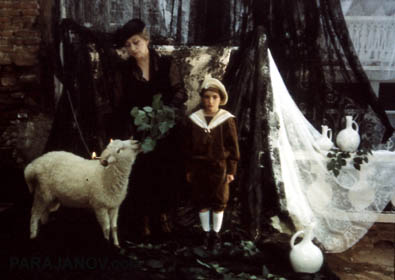
This program of 35-millimeter experimental films selected by Bruce Posner is a mixed bag, though there’s no denying the intensity of the works. That may be part of the problem: including musical interludes between clusters of films is a good idea, but it backfires because two of the interludes are as aggressive as the films, denying us a contemplative moment when we might catch our breath. But I can still think of two good reasons for seeing this show. There’s an awesome eight-minute fragment by Sergei Paradjanov, literally made on his deathbed, called Confession (1990) that easily surpasses his last two features and deserves to be ranked alongside his sublime Sayat Nova; it centers mainly on a long take juxtaposing a group of musicians (whose music is unheard), an apparent funeral, and various ritualistic activities — all happening at once in the same hallucinatory space in a way that recalls juxtapositions in medieval paintings. And then there are the dated but undeniably lively silent abstract expressionist works made between 1967 and 1992 by Stan Brakhage, the best of which are Night Music (1986) and The Dante Quartet (1987), where the tempi are sufficiently varied to justify the poetic and musical analogies implied in the titles. Read more
From the Chicago Reader (December 9, 1988). — J.R.
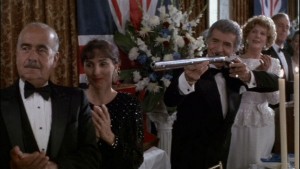
THE NAKED GUN: FROM THE FILES OF POLICE SQUAD!
** (Worth seeing)
Directed by David Zucker
Written by Jerry Zucker, Jim Abrahams, David Zucker, and Pat Proft.
With Leslie Nielsen, George Kennedy, Priscilla Presley, Ricardo Montalban, O.J. Simpson, and Nancy Marchand.
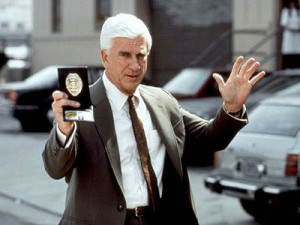
Unlike some of my colleagues, I find the latest comedy by David Zucker, Jim Abrahams, and Jerry Zucker (the ZAZ team) a notch below their previous Airplane! (1980) and Top Secret! (1984). This shouldn’t matter much to anyone looking for an irreverent, anything-goes farce with a fair number of laughs; The Naked Gun is certainly that, and I don’t intend for the following to scare anyone away from it. But I do want to consider what’s been happening to the ZAZ team’s distinctive brand of satire over the past eight years.
All three ZAZ movies use as their point of departure the crystallized form of some bad formula movie. The lead characters wear deadpan expressions through their cliche roles, and the laughs derive largely from non sequiturs in their dialogue and from lunatic gags that surround them as they trudge through their routine plots, impervious to the silliness.
Airplane! stuck to this pattern pretty consistently, lampooning the disaster blockbusters of the 70s like Earthquake, the Airport sequels, and The Towering Inferno. Read more
From a 1989 catalog that I did for the Walker Art Center, Cinema Outsider: The Films of William Klein. — J.R.
William Klein on His Film Work
Klein made the following remarks in a telephone conversation with Jonathan Rosenbaum in early November 1988.

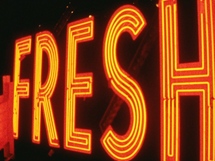
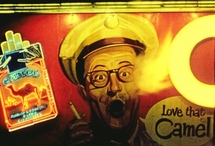
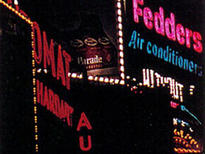
On Broadway by Light (1958) and Orson Welles
I did this book on New York: black-and-white, grungy photographs. People said, ‘What a put-down — New York is not like that. New York is a million things, and you just see the seamy side.” So I thought I would do a film showing how seamy New York was, but intellectually, by doing a thing on electric- light signs. How beautiful they are, and what an obsessive, brainwashing message they carry. And everybody is so thankful for this super spectacle. Anyway, I think it’s the first Pop film.
Afterwards, I went from New York to Paris on a boat. We were on the pier with all our suitcases when I saw Orson Welles with a cigar and a little attaché case – that’s all he had as luggage. I went up to him and said, “Listen, I’ve just shot a film. Would you like to see it?” I showed it to him in the boat’s movie theater, and he said, “This is the first film I’ve ever seen in which the color is absolutely necessary.” Read more
From Wide Angle, vol. 8, no. 3-4, 1986. –- J.R.
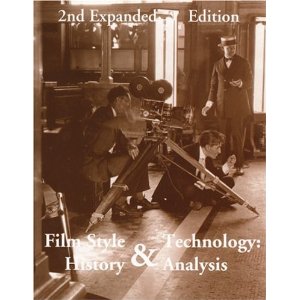
FILM STYLE AND TECHNOLOGY:
HISTORY AND ANALYSIS by Barry
Salt, Starword, 3 Minford Gardens,
London W14 0AN, England, 1983:
paper, $ 15.00, 408 pages, lllustrations
It is a sad commentary on the
narrowness and inflexibility of current
academic publishing in film studies
that this major work had to be brought
out at the author’s own expense.
Handsomely produced and generously
priced, Film Style and Technology:
History and Analysis offers what is
conceivably the most detailed account
of film technology that we have had to
date, stretching from 1885 through the
Seventies, with roughly one chapter per
decade, and for this aspect of the book
alone, no comprehensive library devoted
to film history can afford to be without it.
In addition, the book’s innovative use of
statistical style analysis, while
problematical in relation to certain stylistic
issues, nevertheless introduces a new form
of rigor to film analysis that deserves to be
considered in detail.
If, as a “total” view of cinema, Salt’s approach
often seems constricted, it nonetheless yields
a wealth of potentially useful material to many
different kinds of film scholars. As Salt’s title
makes clear, a technological history of film
represents only one part of his enterprise. Read more
From the Chicago Reader (December 16, 1994). — J.R.

Red
**** (Masterpiece)
Directed by Krzysztof Kieslowski
Written by Krzysztof Piesiewicz and Kieslowski
With Irene Jacob, Jean-Louis Trintignant, Frederique Feder, and Jean-Pierre Lorit.
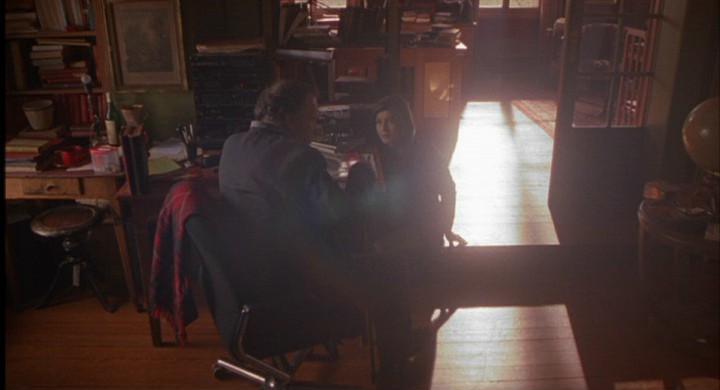
A film of mystical correspondences, Red triumphantly concludes and summarizes Krzysztof Kieslowski’s “Three Colors” trilogy by contriving to tell us three stories about three separate characters all at once; yet it does this with such effortless musical grace that we may not even be aware of it at first. Two of the characters are neighbors in Geneva who never meet, both of them students — a model named Valentine (Irene Jacob) and a law student named Auguste (Jean-Pierre Lorit )– and the third is a retired judge (Jean-Louis Trintignant) who lives in a Geneva suburb and whom Valentine meets quite by chance, when she accidentally runs over his German shepherd.
Eventually we discover that Auguste and the retired judge are younger and older versions of the same man (neither of them meet, either). Another set of correspondences is provided when, in separate scenes, Valentine and the judge are able to divine important facts about each other: he correctly guesses that she has a younger brother driven to drug addiction by the discovery that his mother’s husband is not his real father; she correctly guesses that he was once betrayed by someone he loved — which also happens to Auguste during the course of the film. Read more
From the Chicago Reader (June 17, 1994). — J.R.
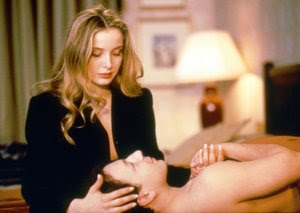
** WHITE
(Worth seeing)
Directed by Krzysztof Kieslowski
Written by Krzysztof Piesiewicz and Kieslowski
With Zbigniew Zamachowski, Julie Delphy, Janusz Gajos, Jerzy Stuhr, Grzegorz Warchol, and Jerzy Nowak.

“Imagine a kind of filmmaking that’s truly in tune with the ways you think and relate to other people. A deeply humane kind of filmmaking, but free from ‘humanist’ lies and sentimental evasions. Not a dry, ‘realistic’ kind of filmmaking, but one in which all the imaginative and creative efforts have gone into understanding the way we are. A kind of filmmaking as sensitive to silence as to speech, and alert to the kind of meanings we prefer to hide away. To my knowledge, only two directors in the world are currently making films like that. One is Krzysztof Kieslowski in Poland. The other is Edward Yang in Taiwan.”
These rousing words by Tony Rayns in the June issue of Sight and Sound were just what I needed to read after returning last month from Cannes, where wonderful films by Yang and Kieslowski about contemporary life were showing in competition. They were the two best competing films that I saw, though neither won any prizes. Read more



























